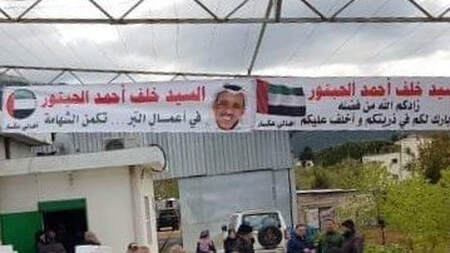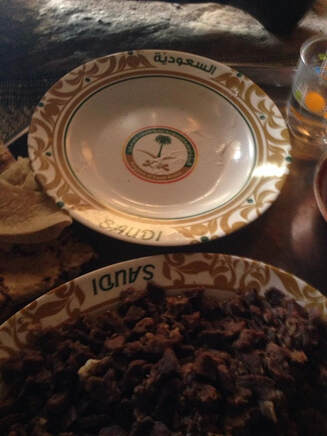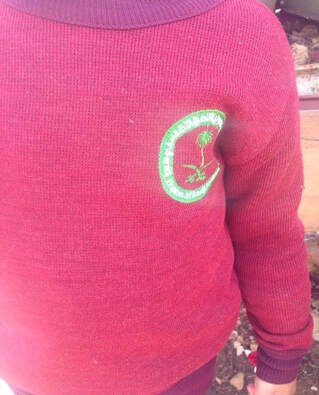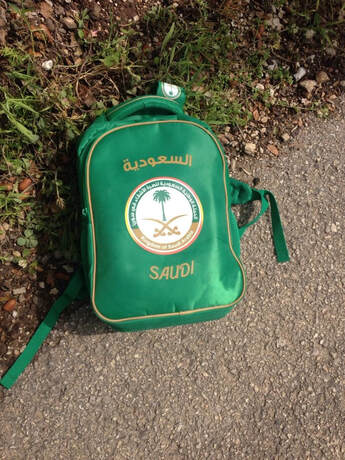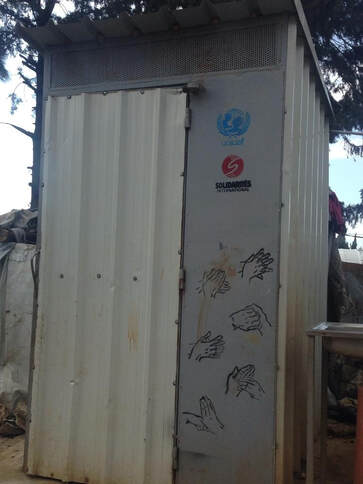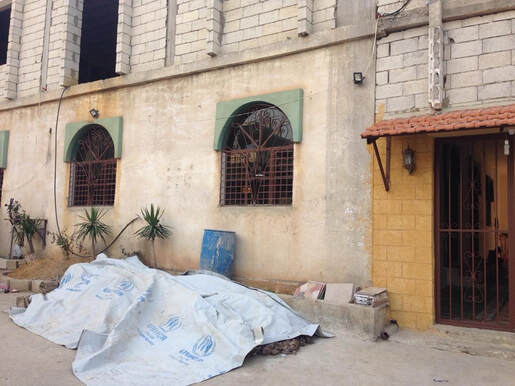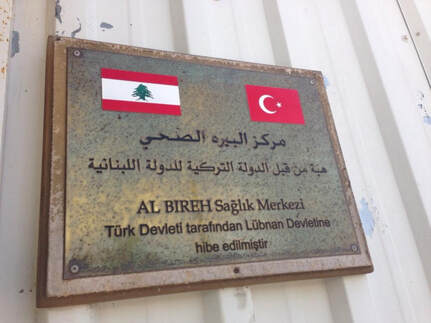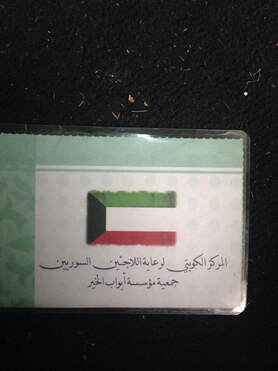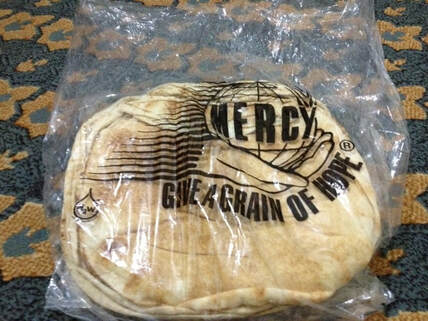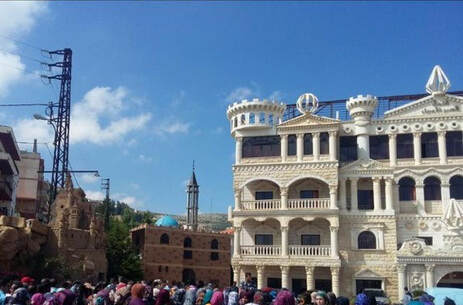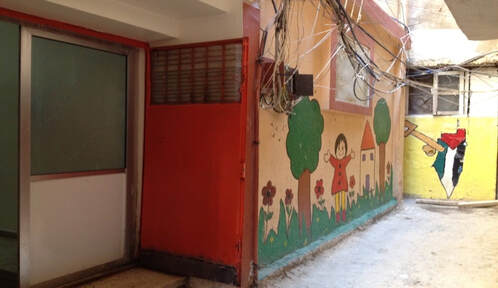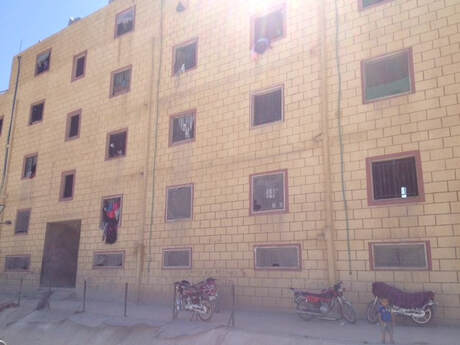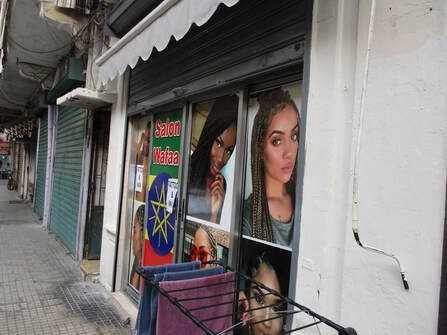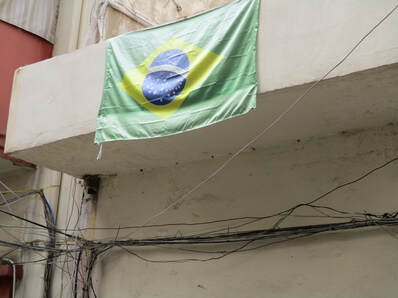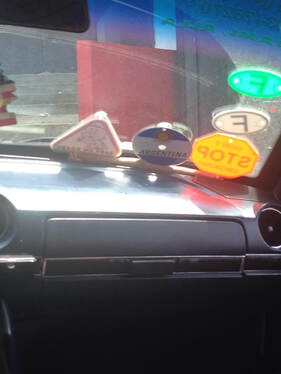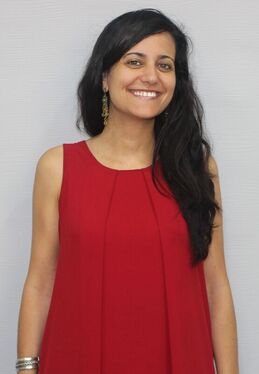|
By Estella Carpi … Everyone was there and wanted their logo to be known… it’s a brand. And in the July 2006 war [of Israel on Lebanon] there were definitely more international brands than ever. (Author’s interview with the Manager of the Social Development Centre, Office of the Ministry of Social Affairs, ash-Shiyyah, Beirut, October 30, 2011) The visuality of symbols, buildings, and icons can powerfully mark spaces and make such spaces political, culturally oriented, spiritual, and even human. In times of crisis, it is particularly employed to exhibit the presence of humanitarian work. However, such a visuality can take different forms, and humanitarian logos are only one means of expression. Humanitarian logos communicate to the public that the labelled organizations are there assisting the needy, alleviating their predicament, witnessing human suffering, or rescuing lives. During the years I spent researching aid in Lebanon (2010-2020), people have often spoken of the ‘war of logos’ to emphasize the competition between different humanitarian actors intervening in crisis-stricken areas. In such areas, where migrants and refugees often reside, new local understandings of physical space have arisen. However, aid-marked spaces across Lebanon are not only relevant in the time of war or post-war. In this blog post, I show how they can become stable hubs of human trust and reciprocity, a normal part of everyday life, inviting dwellers to rethink these spaces of coexistence. Aid, therefore, going beyond official humanitarianism, turns out to be a politics of space, changing people’s perceptions of the places they have known for long and inducing them to rethink their spatial margins. After the arrival of refugees from Syria (2011), the aid coming into Lebanon from the Arab Gulf increased, involving both in-kind assistance (i.e. food and school material kits) and cash-based programmes. Traditionally, Islamic charity work objects to iconic politics, adducing Prophet Mohammed’s hadith “the left hand does not see what the right hand gives” (la ta‘lamu shamaluhu bima tunfiqu yaminahu). However, some Arab Muslim philanthropists provide humanitarian aid by making their relief provision visible and, at times, even displaying their own face, their national flag, and their logos. Individual philanthropists in the Arab Gulf often opt to show the national flag and the faces of charity founders. During my most recent fieldwork for the Southern-led Responses to Displacement project in North Lebanon, many Syrian refugees emphasised that they do not support the politics of some foreign governments in the Syrian conflict and, at times, are reluctant to accept the donations. A Syrian refugee friend told me in Bebnin in the spring of 2019, “We’re using the plates with the Saudi logo to show you we are given this stuff… but we normally don’t like using them as we don’t think Saudi politics helped Syrians in any way…”. NGOs and UN agencies from the ‘global North’ similarly use logos to mark their humanitarian space, although the space is often shared with other humanitarian actors. I often met refugees who stressed how ephemeral and punctuated (appearing, disappearing, and reappearing over time) humanitarian assistance is: humanitarian logos always remain there, while aid workers show up to provide help only once in a while. Beneficiaries generally interpret logos negatively, as a sign of an increasingly prominent humanitarian-business nexus where assistance needs to be branded to be funded and supported. Yet some refugees I spoke to view the logos positively, as they visually convey the politics that relegate their lives to the margins and make their living conditions precarious and unjust. Such acts of ‘self-visibilization’ enable people in need to battle against the discriminatory and unequal politics of some aid providers. Logos also inform us about the cooperation between humanitarian agencies which, generally, we would not associate with each other, such as Polish Aid and Australian Aid co-funding a dispensary for Syrian refugees and vulnerable local residents in the village of al-Bireh in North Lebanon. Spaces of aid are usually remembered by the nationality of the funders, whose logos - often displaying their national flag even for non-governmental funding - are placed on street signs, entrance gates, and indoor walls. In the sign above it is evident that the funding for what is commonly known in Kweishra (Akkar) as the “Turkish hospital” (al-mustashfa al-turki) is a donation from the Turkish state to the Lebanese state. However, the local residents and Syrian Arab refugees point out that only Turkmen Syrian refugees and a small number of Turkmen Lebanese have access to this clinic. Beneficiary communities sometimes speak about humanitarian symbols with criticism and question their aid and service provision. A Syrian refugee woman from Homs who relocated to a border village in Lebanon highlighted that rent and medications were the primary needs of her family and community in Lebanon. At a time when e-food ration cards[1] had not been introduced yet, she told me with sarcasm, “I came from Syria to get packages of bread in Lebanon… I don’t give a damn about their ‘grains of hope’: it’s 2,000 Lebanese Lira… I can pay for it. Why don’t they provide medications and cash for rent instead? They provide what is easier for them” (Wadi Khaled, January 29, 2013). New local understandings of physical space have arisen in areas newly inhabited by migrants and refugees. For instance, in the economically disadvantaged district of Dinniye, local residents told me they used to identify the Emirs’ Castle Hotel (Funduq Qasr al-Umara’) as the luxurious holiday resort for tourists from the Arab Gulf. From 2012 onward, with the arrival of Syrian refugee families, local people conceptualised the area as a hotspot of “relief for the left-behind” (al-ighatha li’l ma‘zulin), where refugees collect aid provided by the Arab Gulf and are temporarily accommodated. Aid-marked spaces across Lebanon are not only relevant in the time of war or post-war: they can remain stable hubs of human trust and reciprocity, a normal part of everyday life. The Beit Atfal as-Sumud in the Palestinian refugee camp Shatila in Beirut’s southern suburbs[2] represents a point of call for Palestinian dwellers, providing education, play activities, and medical support and referring beneficiaries to other NGOs and specialistic services. During my visits since 2011, I realized the employees are more trusted than the United Nations Refugee Works Agency (UNRWA)’s services.[3] The Beit is the spatialization of the most effective aid in the neighbourhood, as known by other migrant and refugee groups who inhabit the area. A large number of Syrian refugees in rural and peri-urban Lebanon reside in informal tented settlements (ITS) built on pieces of land on the side of public roads, which they need to rent from landowners, rent apartments or occupy empty depots in urban settings. Sometimes, families who were not even acquainted to each other before arriving in Lebanon end up living in the same household to be able to share expenses and make ends meet. A Lebanese resident from the city of Halba contended, “Once we know in which buildings the refugees live, we tend to avoid those areas.” We thus see new borderscapes (Lebuhn, 2013) in the making, where new margins, although not physically marked, emerge in the environment. Some spaces are neither marked by NGO logos nor emerge as official spaces of aid provision in the public sphere. Yet, within local communities, they are understood as places where aid is likely to be given. Hairdressing and beauty salons for Ethiopian migrant workers became important points of call to weave support networks and exchange resources between Lebanon and Ethiopia or other African countries. Indeed, in Bourj Hammoud[4], African migrant workers from different national backgrounds said they frequent the same places where it is possible for them to gather information and seek support from other social groups or their countries of origin, beyond their own national belonging. Football in Lebanon is known to be an activity people are passionate about, a way of connecting them to the world outside, and also a reason for gatherings and social mingling. National flags of other countries are often used to show support to national football teams. However, during my research in Lebanon, I realized there is sometimes a more complex story about the different national symbols exhibited in public space. A Lebanese Armenian family in Bourj Hammoud told me how they not only support Brazil in football world leagues, but they also cherish the generosity of their relatives who resettled in Brazil in the 1970s and sent material and moral support during the Lebanese civil war (1975-90). Showing the Brazil flag outside their balcony became a way to show their gratefulness. Similarly, a taxi driver, in the municipality of Minieh in North Lebanon, spoke of Argentina not only as his favourite football team in the world leagues, but also as the place which welcomed and supported him, his family and friends during the 1980s. After returning to Lebanon after the end of the civil war, he still preserves his childhood memories of Argentina and hopes his own children will get to know the country at some stage. Sticker of Argentina on a taxi cab in Minieh, North Lebanon. April 2019. Humanitarian aid, ultimately, turns out to be a politics of space. It changes people’s perceptions of the places they have known for long and induces them to rethink their spatial margins. Moreover, the material manifestations of aid are not exclusively to be found on logos and brands that indicate distribution spots or offices. Symbols, material objects and shops can give rise to different aid imaginaries. While those who believe in a no-profit humanitarianism commonly criticize the logo-marked bond between aid provision and business, alternative spaces of aid do not need to be marked by logos, as they are the result of entangled stories, personal relationships, and transregional trajectories of human support. Intimate memories do not need logos to have their presence acknowledged; it is generally in people’s mental spaces that they are preserved. Notes [1] At the outset of the Syrian refugee influx into Lebanon (2011-12), many of the ‘global North’s’ humanitarian actors were reluctant to provide cash assistance to refugees, preferring to prioritise the delivery of food, medical, and other items. In 2013 e-food ration cards began to be distributed to refugee households, replacing the old food vouchers. Also, over the last few years, especially after the 2015 Lebanon Crisis Response Plan, NGOs and UN agencies agreed on reducing the delivery of in-kind assistance in order to enhance cash assistance. Nowadays, Arab Gulf funded NGOs in Lebanon mostly provide material aid, such as mattresses and food, and, during Ramadan, iftar baskets and dates. [2] Established in 1984 after the 1982 Sabra and Shatila massacres. [3] UNWRA services are seen as decreasingly sympathetic with the Palestinian cause. [4] An independent municipality located at the East of Beirut, historically marked by the Armenian forced migration, and today populated by different migrant groups. * This research has been conducted in the framework of the project "Analyzing South-South Humanitarian Responses to Displacement from Syria: Views from Lebanon, Jordan and Turkey", funded by the European Research Council under the Horizon 2020 Research and Innovation agreement no. 715582".
0 Comments
|
Archives
June 2022
|
No part of this publication may be reproduced, stored in a retrieval system or transmitted in any form or by any means, electronic, mechanical, photocopying, recording or otherwise, without prior permission of the copyright holder, except for the inclusion of quotations properly cited.
Published in Vienna, Austria by ROR-n.

